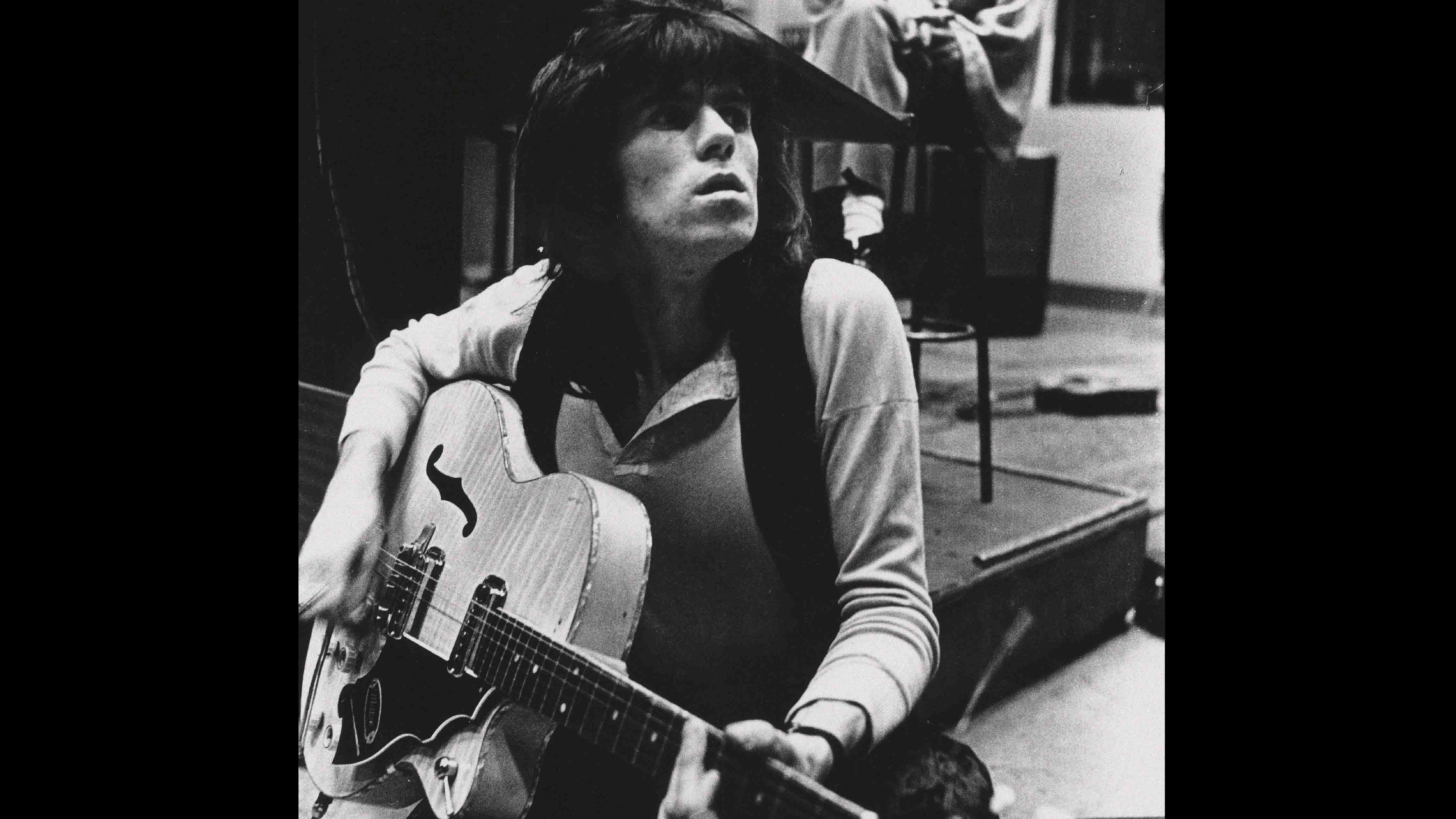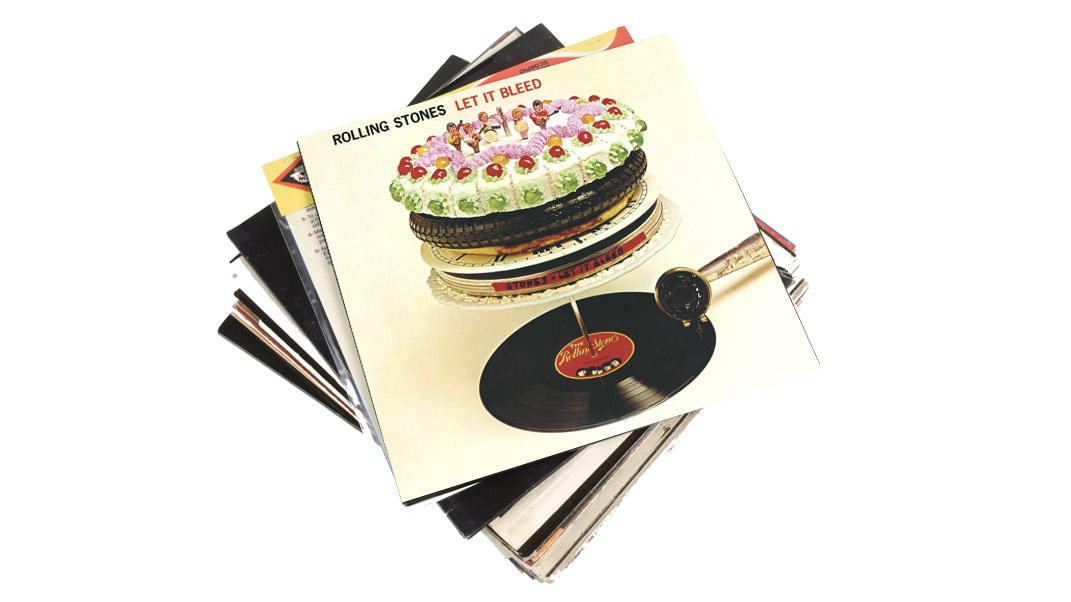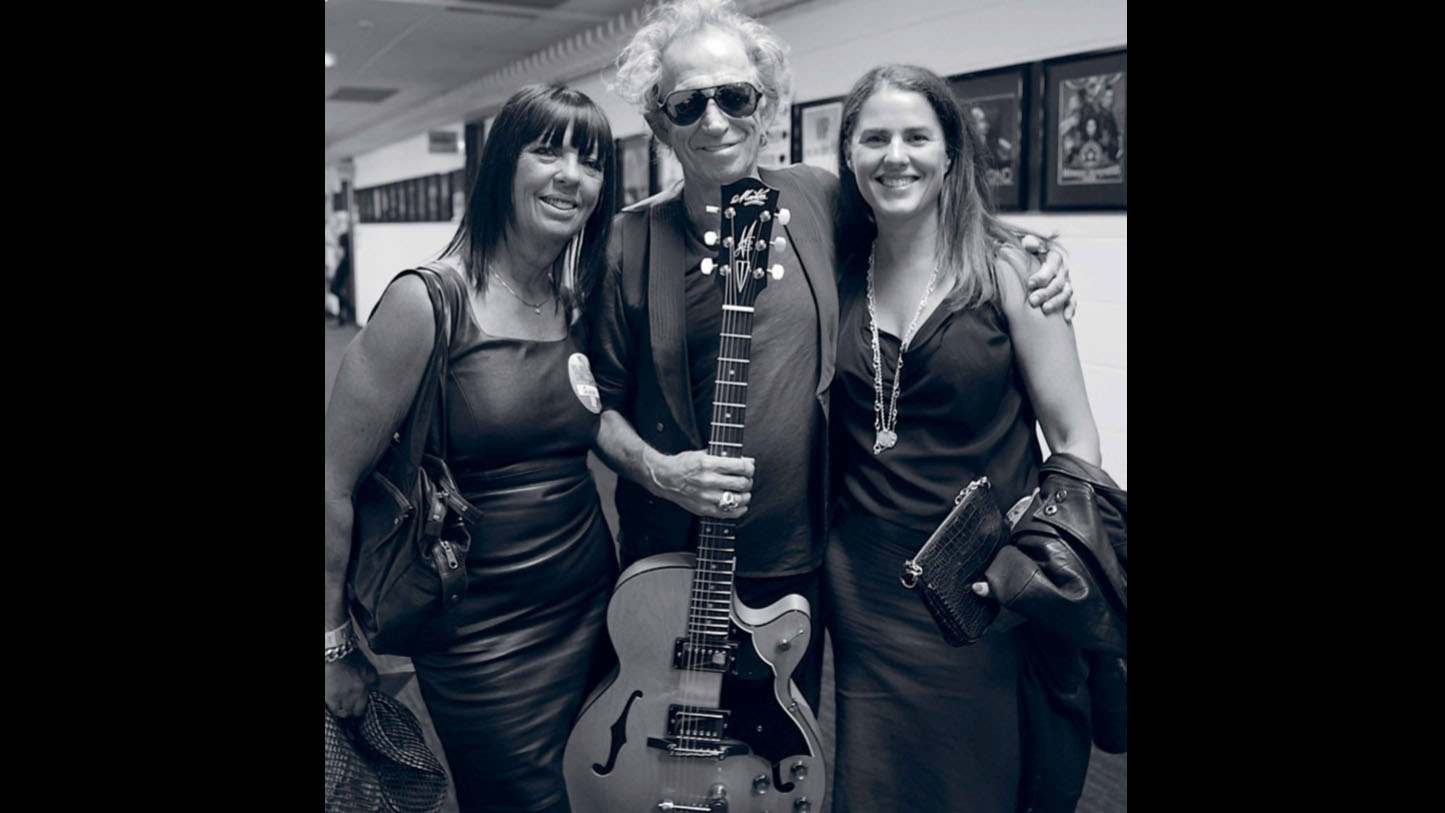The story behind The Rolling Stones' Gimme Shelter
How a Maton electric guitar shaped the classic Keith Richards track

The story behind The Rolling Stones' Gimme Shelter
Keith Richards reportedly owns 3000 guitars, and he once jokingly said, "Give me five minutes and I'll make them all sound the same."
But there's something about the guitar on Gimme Shelter that's very different. The song contains one of The Rolling Stones' best-known riffs, it comes from one of their most critically acclaimed albums and it has one of the most fascinating backstories in their entire catalogue.
And what was Keith Richards playing on it? A Fender Telecaster? A Les Paul Standard? A sunburst Gibson ES-330TD? It was a Maton EG240 Supreme.
The story of how Keith ended up with an Australian Maton guitar in his hands while recording Gimme Shelter in 1969 is a happy accident. Like so many things from that time, Keith forgets the name of the person who owned the instrument, but remembers him staying at his London apartment for a while.
On the very last note of Gimme Shelter the whole neck fell off. You can hear it on the original take
"He crashed out for a couple of days and suddenly left in a hurry, leaving that guitar behind," he recalled in a 2002 interview with Guitar World. "You know, 'Take care of it for me.' I certainly did."
Well, not exactly. In fact, the guitar ended up in two pieces. Keith played the Maton throughout the Let It Bleed sessions in February and March 1969, and particularly on Midnight Rambler and Gimme Shelter.
"It had been all revarnished and painted out, but it sounded great," he said. "It made a great record. And on the very last note of Gimme Shelter the whole neck fell off. You can hear it on the original take." The run of four albums the Stones made between 1968 and 1972 - Beggars Banquet (1968), Let It Bleed (1969), Sticky Fingers (1971) and Exile On Main St (1972) - is generally considered the highpoint of their career.

Let It Bleed
But the band was at a fractious point in March 1969 when they entered Olympic Studios in Barnes, south-west London. Brian Jones, their mercurial but drug-addled lead guitarist, was virtually missing in action during the making of Let It Bleed.
Although he would turn up to the early sessions - and there is even a photo of him sitting cross-legged on the studio floor, attaching a capo to the neck of the same Maton played by Keith - he had become increasingly erratic and unable to play, and is only credited with recording congas on Midnight Rambler and autoharp on You Got The Silver.
Keith played the lion's share of the guitars on the album, with Mick Taylor, who would soon become a full-time member, playing on Country Honk and Live With Me. Jones, who was originally the leader of the band, was sacked on 8 June 1969. He died from drowning in his pool on 2 July. He was 27 years old.
Some have suggested the sense of stormy menace in Gimme Shelter is directly related to Keith's feelings of betrayal
Meanwhile, Mick and Keith were having their own personal problems. In the soap opera of the Stones' love lives - it was the late-1960s after all - Keith had taken up with Jones' girlfriend of two years, Italian model and actress Anita Pallenberg, in 1967.
In early 1969, Pallenberg was acting with Mick in the British gangster film Performance, and the two had an affair. Some have suggested the sense of stormy menace in Gimme Shelter is directly related to Keith's feelings of betrayal. It should be pointed out that Keith has admitted that, in an act of revenge, he had sex - just once - with Mick's girlfriend, Marianne Faithfull.
Mick has always talked about the lyrics to Gimme Shelter as reflecting the times at the end of the 1960s. In a 1995 interview with Rolling Stone, he said, "Well, it [was] a very rough, very violent era. The Vietnam War. Violence on the screens, pillage and burning. And Vietnam was not war as we knew it in the conventional sense. The thing about Vietnam was that it wasn't like World War II, and it wasn't like Korea, and it wasn't like the Gulf War. It was a real nasty war, and people didn't like it. People objected, and people didn't want to fight it."
My thought was storms on other people's minds, not mine. It just happened to hit the moment
Keith's take on it is more personal. He reflected on the song in Life, his 2010 memoir: "I wrote Gimme Shelter on a stormy day, sitting in Robert Fraser's apartment in Mount Street (in London's exclusive Mayfair). Anita was shooting Performance at the time, not far away.
"It was just a terrible fucking day and it was storming out there. I was sitting there in Mount Street and there was this incredible storm over London, so I got into that mode, just looking out of Robert's window and looking at all these people with their umbrellas being blown out of their grasp and running like hell. And the idea came to me. My thought was storms on other people's minds, not mine. It just happened to hit the moment."

Legacy and tragedy
The snaky, chiming, multi-layered sound of the Maton is central to Gimme Shelter, but the element that kicks the song into another gear is the backing vocal, which is so dynamic that calling it a backing vocal seems wrong.
Once again, it was a happy accident. In October, the album was being mixed at Sunset Sound in Los Angeles, and it was decided that a female vocal was needed to respond to Mick's lead.
Merry Clayton, who had sung with Elvis Presley, The Supremes and Ray Charles, was in bed when the phone rang around midnight. She was pregnant and her hair was in curlers. She answered the phone and it was producer Jack Nitzsche, who asked if she could come in at short notice to do the session. She claims she had no idea who The Rolling Stones were, and was inclined to say no, but her husband convinced her to do it.
Merry Clayton's performance is one of the greatest scene-stealing backing vocals of all time
The power of her wailing and the way her voice cracks on the line 'Rape! Murder! It's just a shot away!' has made her performance one of the greatest scene-stealing backing vocals of all time. On recordings of her isolated vocals, you can hear The Stones in the recording booth whooping and shouting with amazement.
Whether it was inspired by the weather, the war, the times or jealous rage, Gimme Shelter has become one of the best-loved Rolling Stones songs. It has been recorded by a wide range of artists, including Grand Funk Railroad, Hawkwind, Patti Smith, Inspiral Carpets, Puddle Of Mudd, The Sisters Of Mercy, Stereophonics, Goo Goo Dolls, The Hellacopters and Kathy Mattea. Martin Scorsese has used it in the soundtracks to three of his films - Goodfellas, Casino and The Departed. On the Rolling Stone list of The 500 Greatest Songs Of All Time, it was placed at number 38.
Let It Bleed was released on 5 December 1969. A day later, The Stones headlined a free festival in front of 300,000 people at the Altamont Speedway in northern California. Other acts on the bill included Santana, The Flying Burrito Brothers, Jefferson Airplane, and Crosby, Stills, Nash & Young.
Gimme Shelter has become one of the best-loved Rolling Stones songs
During The Stones' performance, Hells Angels biker gang members, who had been hired as security, stabbed and killed Meredith Hunter, an 18-year-old black audience member who had pulled out a gun. It cast a pall over the band and the rock music world.
In addition to Hunter's death, two people were killed in a hit-and-run incident, another person drowned in an irrigation ditch and there were many injuries among audience members, along with reports of stolen cars and property damage.
Altamont was viewed as the antithesis of Woodstock, which was billed as '3 Days of Peace & Music' and held just four months earlier. And the timing of it - on 6 December 1969 - meant that it was perceived as much more than a single tragic event. It came to be seen as the end of the 1960s.
This is an extract from 'The Music That Maton Made: the Australian guitar handmade for the world stage', available now via Scribe, priced at £40.